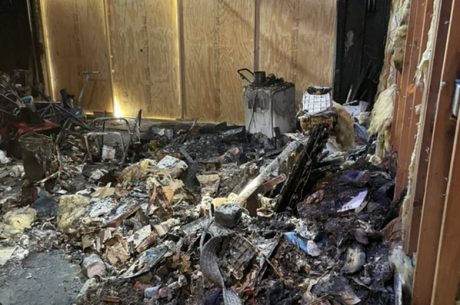SMOKE ODOR REMOVAL
Removing smoke odor resulting from a fire can be a challenging task. Smoke — the result of incomplete combustion; is comprised of solid particles (soot) as well as oils and gases. Its odor comes from volatile molecules released when materials are burned and often linger well after the visible smoke is cleared.
Removing the Source
The first and most important step insmoke odor removal is to remove the source of the odor(s). This could involve physically removing burnt items such as cabinets, furniture, drywall, non-salvageable contents, etc., and includes the cleaning of remaining items and materials with appropriate cleaning products. Only after this has been done will a professional turn his attention to any remaining odors.
Clean the Air Ducts
Cleaning the duct system in a home is an important first step in the remediation/restoration process for a professional. Smoke, soot and odors from a fire will be within the duct system and any dust or other particles inside of that system. It is important to do this early in the restoration process to avoid having the HVAC system re-contaminating areas that have been cleaned.
Removing Airborne Odor
Since the volatile molecules of smoke remain airborne, the first task of restorative work is to remove the odor from the air. There are a variety of specialized techniques to accomplish this task. Some are time-tested and have been used for many years, while others are newer and designed to meet customers’ heightened awareness and sensitivity to chemicals. Regardless of the technique used, they all share a common goal — the complete removal of offensive smoke odor. Following are some examples of proven systems:
AIR SCRUBBING
A professional will have a HEPA (High Efficiency Particulate Arrestor) Air Scrubber operating throughout his restoration activities. These units are very effective at removing 99.97% of particulates from the air that are 0.3 microns and larger in size (a micron is 1/1,000 the thickness of a dime). Removing these airborne particulates removes additional source materials for odors.
THERMAL FOGGING
Fogging uses a petroleum-based deodorizer emitted via a thermal fogging unit. It fills the affected area with a mist-like deodorizer. Fogging counteracts odorous molecules by using fragrance modification for permanent odor neutralization. Prior to fogging, all flames must be extinguished and all persons must wear respiratory protection or evacuate the treatment area.
VAPOR MODIFICATION
Vapor Modification uses an aromatic compound vaporized from a sealed plastic container then dispensed into the air by a fan or blower. The mineral oils used in this process are non-toxic, non-oily, non-flammable, and non-explosive. Therefore, customers can choose to remain in or near an area while it is undergoing treatment. The deodorizer also penetrates affected porous contents like upholstery and drapery. Like thermal fogging, Vapor Modification is a fragrance modification technique and is considered a permanent neutralization method.
OZONE GENERATION
Ozone Generation is one of the most popular and familiar processes used to remove airborne smoke odor molecules, including hard-to-neutralize protein smoke. Ozone is a powerful oxidizer that neutralizes odorous molecules by releasing additional oxygen (O) into the air. Ozone, while an effective odor remover, should not be represented as an “air purifier.” Customers should not be present when an ozone generator is in operation. Personnel should enter the treatment area only briefly to turn the ozone generator on or off. Ozone is best deployed in a controlled environment such as an ozone chamber wherein odorous contents can be subjected to 24 to 48 hours of ozone gas. Entrance into an ozone chamber should be brief and strictly limited to qualified personnel.
The process of smoke odor removal is a multidimensional process that must be comprehensive in order to be successful. Yet it CAN be accomplished. Call your local PuroClean office for complete—and successful—removal of smoke odor.




 PuroClean of Orland Park
PuroClean of Orland Park